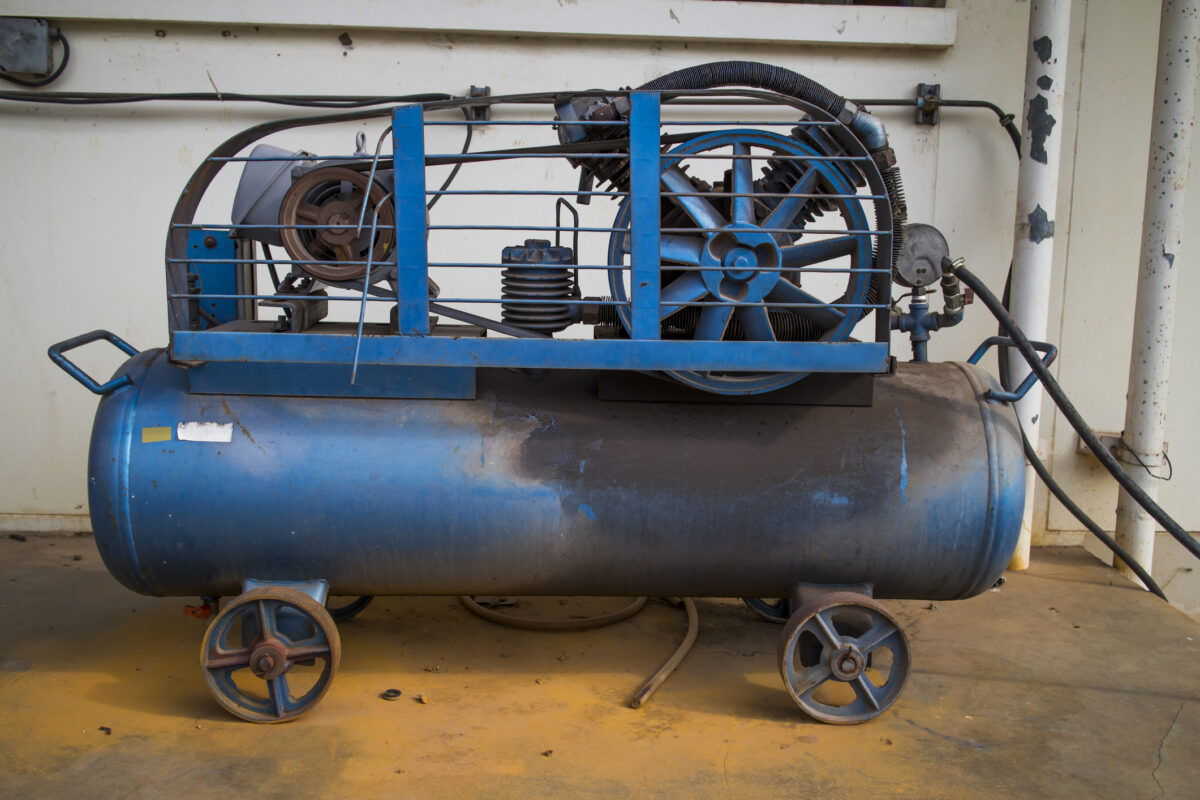Jump To:
TL;DR: Air compressors are essential pieces of equipment in various industries. They provide the much-needed power for tools in manufacturing plants, automotive garages, construction sites, and more. But what happens when your air compressor is not building pressure as it should? Understanding this problem is crucial, as it can drastically impact the function and efficiency of your tools and operations.
Understanding the Basics of Industrial Air Compressors
Before we get to the root of the problem, it’s important to understand how an air compressor works. As the term suggests, an air compressor compresses air into a tank, thereby building pressure. This compressed air can then be used to power various tools and machinery. Here are some of the key components of your air compressor that are important to understand…
- Compressor Tank: A storage unit for compressed air, allowing the compressor to cycle less frequently and providing a reserve of air for tools.
- Pressure Switch: A switch that automatically starts or stops the compressor when the air pressure in the tank reaches a preset level.
- Unloader Valve: Releases trapped air from the compressor head and discharge line when the compressor stops, easing the motor’s startup.
- Check Valve: Prevents compressed air from flowing back into the compressor pump from the tank, ensuring one-way flow.
- Safety Valve: A safety device that automatically releases air if the pressure in the tank exceeds safe levels to prevent explosions.
- Pressure Regulator: Adjusts the air pressure coming from the tank to a consistent, lower pressure level for tools.
- Bleed Valve: Allows manual release of air from the tank to reduce pressure or drain moisture.
- Tank Valve: A valve typically at the bottom of the tank used for draining condensation or the tank itself.
- Tank Pressure Gauge: Gauge displays the current air pressure inside the compressor tank.
- Relief Valve: Similar to the safety valve, it’s designed to release excess pressure from the tank or system to avoid over-pressurization.
So What Might Be Causing Issues With Insufficient Pressure?
Signs of a compressor not building pressure could include:
- Compressor runs continuously without stopping
- Low pressure on the gauge
- High-pressure fluctuations
- Excess oil carryover
- Noticeable air leaks
While these are some general issues, the actual problem may differ based on specific use cases and the specific model of the air compressor. It’s always recommended to get a professional to examine the problem, ensuring the correct diagnosis and a safe solution.
Why Your Air Compressor Is Not Building Pressure: How to Diagnose and Fix the Problem
Now that we know the components at play and the possible issues, how do you go about diagnosing the problem?
You need to be observant and careful as you proceed with these checks and fixes – always prioritize safety while handling machinery. While professional assistance is recommended, you can perform these simple checks to gain a better understanding of the problem.
Listen Carefully for Leaks & Seal Them
Problem: The first step is to check for any air leaking out of the compressor tank. Start the compressor and listen for resulting sounds. An air leak will be accompanied by a characteristic hissing or whistling noise. Use your hand around the air line and connection points to see if you feel any air escaping. You can also use a bit of soapy water applied on the suspected leak points. If bubbles appear, you’ve got a leak.
Solution: If air leaks are identified in the air line or connection points, they can be sealed using a variety of methods depending on the size and location of the leak. This could involve tightening a connection or applying a sealant. Be sure to take the compressor out of service and depressurize it before attempting any repair.
Pressure Switch & Unloader Valve Testing and How to Fix
Problem: The pressure switch is typically found close to the compressor motor and is connected to the air line. To test the pressure switch, watch the compressor when it cycles. If it’s not cycling off when it reaches cut-out pressure, there is likely an issue with the pressure switch. On the other hand, if the compressor isn’t reliably starting up again when the tank pressure drops, the issue can be with the unloader valve.
Solution: If you’ve identified a problem with the pressure switch, correcting the cut-in and cut-out pressure as per the manufacturer’s recommendations can help restore the correct compressor cycling. If the issue is with the unloader valve, this part likely needs to be replaced.
Issues with the Reed Valve & Check Valve and How to Fix Them
Problem: You might need to dismantle a portion of your compressor to get to the reed valves. If the reeds are damaged, broken, or not seated correctly, they can negatively affect the compressor’s ability to build air pressure. The next step is to inspect the check valve which is located on the outlet of the air compressor. A functioning check valve is crucial to maintain air pressure in the air tank. If air escapes back into the pump via a faulty check valve, you will have a hard time building air pressure.
Solution: Depending on the issue and the specific valve – unloader valve, check valve, reed valves – the valve may need to be cleaned, adjusted, or replaced. Before attempting any such repairs, make sure to consult with the manufacturer’s guide or contact a professional from Advanced Air & Vacuum to avoid any risks.
Other Components of the Air Compressor to Monitor
Checking the Power Supply: If your compressor motor is struggling to maintain or reach the required PSI, it could be due to a lack of proper power. Ensure that the power supply is not interrupted or restricted in any way. You might want to consult a qualified electrician for this check.
Cleaning the Air Line: Debris or build-up within the air line can restrict the airflow and affect the pressure. Cleaning or replacing the air line can help improve the pressure. This should be done with care and proper tools to avoid any risk of damaging the air line.
While these checks may seem simple, remember that they require careful execution and might involve manipulating parts of your compressor machinery that you are unfamiliar with. The safest and most effective way to deal with air compressor pressure problems is always to call the professionals.
The Importance of Regular Maintenance in Preventing Air Compressor Issues
We’ve walked through the ins and outs of why an air compressor might fail to build pressure and how to diagnose and fix this issue. But what if we could prevent these hassles from happening in the first place? That’s where routine maintenance comes in.
The Benefits of Professional Maintenance
Programming regular checks and maintenance for your air compressor has many benefits and is a surefire way to extend its lifecycle. Not only does it prevent sudden and expensive failures, but it also ensures optimal performance and can save you unnecessary expenses in the long run. So, let’s see how we can shield your air compressor from such issues:
Adjusting the Pressure Switch: We will ensure that your pressure switch is maintained and adjusted as per manufacturer recommendations. This regular check helps keep your compressor cycles optimal and extends the lifespan of the compressor.
Checking Valves: We will regularly inspect and clean valves including the unloader valve, check valve, and reed valves. If any damage is spotted, we can replace the valves promptly to prevent them from acting up during compressor operation.
Cleaning the Air Dryer: Your compressor pulls in air along with moisture which it separates with the air dryer. Our experts will ensure regular cleaning of the air dryer and if necessary, replace the moisture separators and air filters.
Regular Compressor Cleaning: A clean compressor runs better. We will regularly clean the exterior, motor fins, and any open coolers to ensure that the system runs cool and performs optimally.
Professional Air Compressor Services From Advanced Air & Vacuum
Our maintenance services at Advanced Air & Vacuum are designed to ensure that your industrial air compressor runs perfectly, providing you with maximum efficiency and longevity. We handle all the above tasks and more, using our professional approach to ensure that your air compressor functions like a well-oiled machine.
But our services do not stop there! We also specialize in the installation of new compressors and repair of broken air compressors. Our expert team’s careful attention can quickly and safely rectify the issue, no matter what it is.

